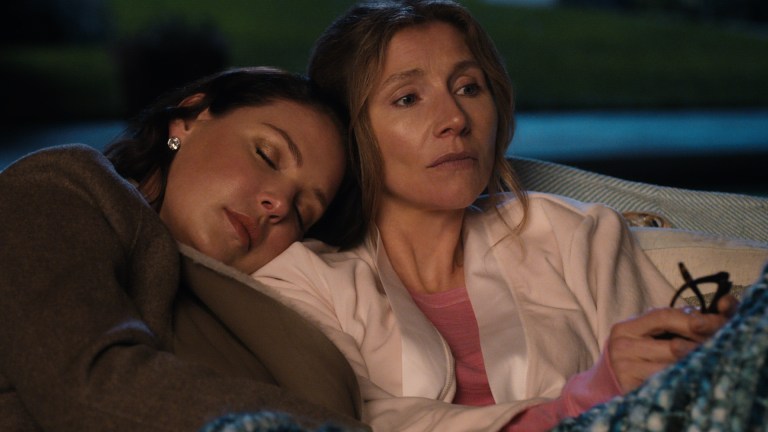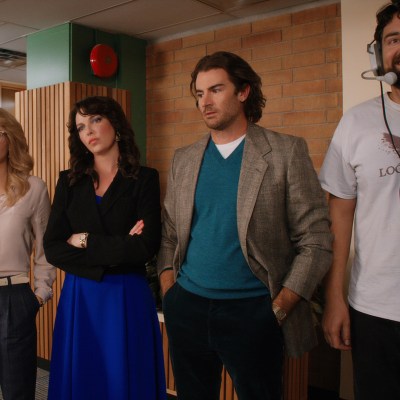How Firefly Lane Depicts a Messy and Moving Female Friendship
Netflix’s Firefly Lane succeeds as a story about two women who found their “constant” in each other, for better or worse.

This article contains spoilers for Firefly Lane.
There’s something altogether predictable yet endearing about Firefly Lane, the latest in a line of Netflix shows adapted from the realm of romance and/or women’s fiction with a clear strength of star power at its center. It’s a story that spans three decades of friendship between two women who meet in their teenage years, following them through their strongest and lowest points in life (both together and apart) and all of the heartache, turmoil and drama that provides.
In short, it’s prime material to mine from, and seemingly tailor-made for the types of shows that Netflix is known for releasing — highly addictive, and sometimes almost in spite of themselves. A story that relies heavily on jumping through time throughout the various stages of a close-knit friendship seems like a tough needle to thread, but Firefly Lane demonstrates the benefits of depicting these characters at different points in their lifetime and never shies away from them at their most messy, which in turn succeeds at making them feel more sympathetic.
A huge part of Firefly Lane’s impact comes from its cast — and the actors who have to do most of the heavy lifting to make the series’ main dynamic feel lived-in and genuine and earned. As free-spirited, independent talk show host Tully Hart, Katherine Heigl feels like she’s finally getting to star in the first small-screen effort worthy of her talents as an actress since Grey’s Anatomy — and she brings both depth and fire to a character who could potentially run the risk of feeling flighty and vacillating.
Given the weight of Tully’s experiences and everything she’s been through, her reluctance to pursue any kind of serious or long-term romantic relationship is understandable — but it also explains why she relies more heavily on the person who’s been the sole constant in her life: her best friend, Kate Mularkey. Meanwhile, Kate isn’t so easily dismissed as the shy, bookish nerd next to Tully’s more outspoken personality; in the hands of Sarah Chalke, Kate proves a strong foil with passions and dreams of her own, even if she might not be declaring them as loudly as her best friend is.
As a pair on screen, Heigl and Chalke are undeniably what gives the show its watchability factor, but they’re complemented by the actors who play the younger versions of their characters. Ali Skovbye and Roan Curtis have to do just as much to make us buy into all the reasons why these two girls, who grow up across the street from each other (on the titular Firefly Lane) and are definitely polar opposites in almost every way, would become friends and, more importantly, stay friends — and because each episode isn’t told in sequential order, but jumps around frequently between decades, it’s not as if they’re simply passing the baton after a certain point in the series and retreating into the background completely.
As teenagers, Tully and Kate have to navigate not only the internal complexities of their friendship but external struggles too — bullies at school, first crushes, first periods, and in Tully’s case, a sexual assault that leaves her grappling with the realities of rape culture and how survivors are too often blamed for what happened to them. Throughout each of these events, we see the girls lean even more on each other for support, which, in the long run, is what leads to their lives almost becoming too entwined at times.
Fast-forward several decades later and it’s clear that Tully, specifically, has achieved her professional dreams of becoming the star of her own show, while Kate has mostly focused on her life as a wife and mother even as she harbors a longing to re-enter the workfield. There are just as many struggles for these women to face at this particular juncture — sexism in the workplace, co-parenting a child through divorce, an unexpected pregnancy and subsequent miscarriage.
Behind closed doors, and once the cameras are off, it’s also clear that Tully’s rise to fame has not necessarily left her any happier for it. She still calls Kate as often as she can from the solitude of her swanky high-rise apartment, hoping and in some cases even expecting that her best friend will always pick up the phone for her. But this is where Firefly Lane does the work of depicting the messiness of this kind of codependency, and why Tully and Kate’s lasting friendship is so often at a disadvantage.
When you’re solely relying on one individual for that emotional reinforcement and constant companionship, sooner or later there’s bound to be disappointment or a moment when they can’t live up to the weight of expectation. It’s clear that beyond any of their romances, beyond any other person in their respective families, beyond anyone who’s ever entered their lives, this is the relationship that matters most, not just to the women themselves but to the narrative, which tends to stagnate whenever the show’s focus is on anyone else.
Then again, as the season finale reveals, an event occurs that’s presently shrouded in mystery; whatever it is, it’s left Kate believing that she can never let Tully back into her life, seemingly closing the book on their friendship for good. Fans of the original novel by author Kristin Hannah are already familiar with this reveal, but it’s information that’s purposefully withheld from the show’s audience in a clear bid to earn it a second season on Netflix.
The effectiveness of this cliffhanger is another topic for debate, but based on everything we’ve seen over the course of these existing ten episodes, these are two friends who find it literally impossible to stay out of one another’s orbits for very long. Whether by time or by trial, Kate and Tully will find their way back to one another, and a prospective season two offers no shortage of theories as to what they’ll have to deal with even as they reconcile — but as we’ve already seen, there’s no reason not to believe that they won’t face those challenges together.

